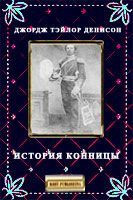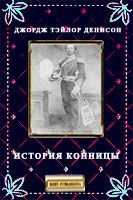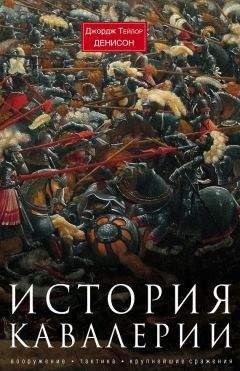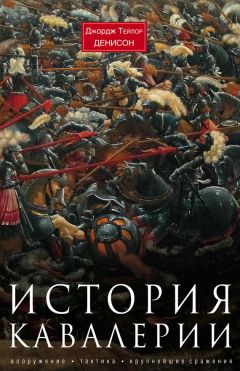Джо Фрил - Библия велосипедиста
Coyle, E. F., et al. Cycling Efficiency Is Related to the Percentage of Type I Muscle Fibers // Medicine and Science in Sports and Exercise24 (1992): 782.
Coyle, E. F., et al. Physiological and Biomechanical Factors Associated with Elite Endurance Cycling Performance // Medicine and Science in Sports and Exercise23, no. 1 (1991): 93–107.
Coyle, E. F., et al. Time Course of Loss of Adaptations after Stopping Prolonged Intense Endurance Training // Journal of Applied Physiology57 (1984): 1857.
Cunningham, D. A., et al. Cardiovascular Response to Intervals and Continuous Training in Women // European Journal of Applied Physiology41 (1979): 187–197.
Czajkowski, W. A Simple Method to Control Fatigue in Endurance Training // Exercise and Sport Biology, International Series on Sport Sciences10 (1982): 207–212.
Daniels, J. Physiological Characteristics of Champion Male Athletes // Research Quarterly45 (1974): 342–348.
Daniels, J. Training Distance Runners – A Primer // Sports Science Exchange1, no. 11 (1989): 1–4.
Daniels, J., et al. Interval Training and Performance // Sports Medicine1 (1984): 324–327.
David, A. S., et al. Post-Viral Fatigue Syndrome: Time for a New Approach // British Medical Journal296 (1988): 696–699.
Dill, D., et al. A Longitudinal Study of 16 Champion Runners // Journal of Sports Medicine7 (1967): 4–32.
Doherty, M. The Effects of Caffeine on the Maximal Accumulated Oxygen Deficit and Short-Term Running Performance // International Journal of Sports Nutrition8, no. 2 (1998): 95–104.
Dragan, I., and I. Stonescu. Organism Recovery following Training.Bucharest: Sport-Turism, 1978.
Dressendorfer, R., et al. Increased Morning Heart Rate in Runners: A Valid Sign of Overtraining? // The Physician and Sports Medicine13, no. 8 (1985): 77–86.
Drinkwater, B. L. Women and Exercise: Physiological Aspects // Exercise and Sports Science Review12 (1984): 21–51.
Drinkwater, B. L., ed. Female Endurance Athletes. Champaign, IL: Human Kinetics, 1986.
Droghetti, P., et al. Non-Invasive Determination of the Anaerobic Threshold in Canoeing, Cycling, Cross-Country Skiing, Roller and Ice Skating, Rowing and Walking // European Journal of Applied Physiology53 (1985): 299–303.
Dunbar, C. C., et al. The Validity of Regulating Exercise Intensity by Ratings of Perceived Exertion // Medicine and Science in Sports and Exercise24 (1992): 94–99.
Eaton, S. B. Humans, Lipids and Evolution // Lipids27, no. 1 (1992): 814–820.
Eaton, S. B., and M. Konner. Paleolithic Nutrition: A Consideration of Its Nature and Current Implications // New England Journal of Medicine312, no. 5 (1985): 283–289.
Eaton, S. B., and D. A. Nelson. Calcium in Evolutionary Perspective // American Journal of Clinical Nutrition54 (1991): 281S–287S.
Ekblom, B. Effect of Physical Training in Adolescent Boys // Journal of Applied Physiology27 (1969): 350–353.
Elevation of Creatine in Resting and Exercised Muscle of Normal Subjects by Creatine Supplementation // Clinical Science83 (1992): 367–374.
Elliott, Richard. The Competitive Edge.Mountain View, CA: TAFNEWS Press, 1991.
Ericsson, K. A., R. T. Krampe, and S. Heizmann. Can We Create Gifted People? // CIBA Foundation Symposium178 (1993): 221–231.
Ernst, E. Does Post-Exercise Massage Treatment Reduce Delayed Onset Muscle Soreness? A Systematic Review // British Journal of Sports Medicine32, no. 3 (1998): 212–214.
An Evaluation of Dietary Intakes of Triathletes: Are RDAs Being Met? // Brief Communications(November 1989): 1653–1654.
Evans, W., et al. Protein Metabolism and Endurance Exercise // The Physician and Sports Medicine11, no. 7 (1983): 63–72.
Faria, I. E. Applied Physiology of Cycling // Sports Medicine1 (1984): 187–204.
Fitts, R. H., et al. Effect of Swim-Exercise Training on Human Muscle Fiber Function // Journal of Applied Physiology66 (1989): 465–475.
Fitzgerald, L. Exercise and the Immune System // Immunology Today9, no. 11 (1988): 337–339.
Fowles, J. R., and D. G. Sale. Time Course of Strength Deficit after Maximal Passive Stretch in Humans // Medicine and Science in Sports and Exercise29, no. 5 (1997): S155.
Francis, K. T., et al. The Relationship between Anaerobic Threshold and Heart Rate Linearity during Cycle Ergometry // European Journal of Applied Physiology59 (1989): 273–277.
Frassetto, L. A., et al. Effect of Age on Blood Acid-Base Composition in Adult Humans: Role of Age-Related Renal Function Decline // American Journal of Physiology271, no. 6–2 (1996): F1114–F1122.
Frassetto, L. A., et al. Potassium Bicarbonate Reduces Urinary Nitrogen Excretion in Postmenopausal Women // Journal of Endocrinology and Metabolism82, no. 1 (1997): 254–259.
Freeman, W. Peak When It Counts. Mountain View, CA: Tafnews Press, 1991.
Freund, B. J., et al. Glycerol Hyperhydration: Hormonal, Renal, and Vascular Fluid Responses // Journal of Applied Physiology79 (1995): 2069–2077.
Friel, J. CompuTrainer Workout Manual.RacerMate, 1994.
Friel, J. The Mountain Biker’s Training Bible. Boulder: VeloPress, 2000.
Friel, J. Training with Power.Cambridge, MA: Tune, 1999.
Frontera, W. R., et al. Aging of Skeletal Muscle: A 12-Year Longitudinal Study // Journal of Applied Physiology4 (2000): 1321–1326.
Fry, R. W., and D. Keast. Overtraining in Athletes // Sports Medicine12, no. 1 (1991): 32–65.
Fry, R. W., et al. Biological Responses to Overload Training in Endurance Sports // European Journal of Applied Physiology64 (1992): 335–344.
Galbo, H. Hormonal and Metabolic Adaptations to Exercise. Stuttgart: Georg Thieme Verlag, 1983.
Gibbons, E. S. The Significance of Anaerobic Threshold in Exercise Prescription // Journal of Sports Medicine27 (1987): 357–361.
Gleim, G. W., and M. P. McHugh. Flexibility and Its Effects on Sports Injury and Performance // Sports Medicine24, no. 5 (1997): 289–299.
Goedecke, J. H., et al. Effects of Medium-Chain Triaclyglycerol Ingested with Carbohydrate on Metabolism and Exercise Performance // International Journal of Sports Nutrition9, no. 1 (1999): 35–47.
Goforth, H. W., et al. Simultaneous Enhancement of Aerobic and Anaerobic Capacity // Medicine and Science in Sports and Exercise26, no. 5 (1994): 171.
Goldspink, D. F. The Influence of Immobilization and Stretch on Protein Turnover of Rat Skeletal Muscle // Journal of Physiology264 (1977): 267–282.
Gonzalez, H., and M. L. Hull. Bivariate Optimization of Pedaling Rate and Crank-Arm Length in Cycling // Journal of Biomechanics21, no. 10 (1988): 839–849.
Graham, T. E., and L. L. Spriet. Caffeine and Exercise Performance // Sports Science Exchange9, no. 1 (1996): 1–6.
Graham, T. E., et al. Metabolic and Exercise Endurance Effects of Coffee and Caffeine Ingestion // Journal of Applied Physiology85, no. 3 (1998): 883–889.
Greiwe, J. S., et al. Effects of Endurance Exercise Training on Muscle Glycogen Accumulation in Humans // Journal of Applied Physiology87, no. 1 (1999): 222–226.
Guilland, J. C., et al. Vitamin Status of Young Athletes Including the Effects of Supplementation // Medicine and Science in Sports and Exercise21 (1989): 441–449.
Hagberg, J. M. Physiological Implications of the Lactate Threshold // International Journal of Sports Medicine5 (1984): 106–109.
Heath, G. A Physiological Comparison of Young and Older Endurance Athletes // Journal of Applied Physiology51, no. 3 (1981): 634–640.
Heath, G. W., et al. Exercise and Upper Respiratory Tract Infections: Is There a Relationship? // Sports Medicine14, no. 6 (1992): 353–365.
Heil, D. P., et al. Cardiorespiratory Responses to Seat-Tube Angle Variation during Steady-State Cycling // Medicine and Science in Sports and Exercise27, no. 5 (1995): 730–735.
Herman, E. A., et al. Exercise Endurance Time as a Function of Percent Maximal Power Production // Medicine and Science in Sports and Exercise19, no. 5 (1987): 480–485.
Hickson, R. C., et al. Potential for Strength and Endurance Training to Amplify Endurance Performance // Journal of Applied Physiology65 (1988): 2285–2290.
Hickson, R. C., et al. Reduced Training Intensities and Loss of Aerobic Power, Endurance and Cardiac Growth // Journal of Applied Physiology58 (1985): 492–499.
Hickson, R. C., et al. Strength Training Effects on Aerobic Power and Short-Term Endurance // Medicine and Science in Sports and Exercise12 (1980): 336–339.
Hoffman-Goetz, L., and B. K. Peterson. Exercise and the Immune System: A Model of the Stress Response? // Immunology Today15, no. 8 (1994): 382–387.
Holly, R. G., et al. Stretch-Induced Growth in Chicken Wing Muscles: A New Model of Stretch Hypertrophy // American Journal of Physiology7 (1980): C62–C71.
Hooper, S. L., and L. T. MacKinnon. Monitoring Overtraining in Athletes: Recommendations // Sports Medicine20, no. 5 (1995): 321–327.
Hooper, S. L., et al. Markers for Monitoring Overtraining and Recovery // Medicine and Science in Sports and Exercise27 (1995): 106–112.
Hopkins, S. R., et al. The Laboratory Assessment of Endurance Performance in Cyclists // Canadian Journal of Applied Physiology19, no. 3 (1994): 266–274.
Hopkins, W. G. Advances in Training for Endurance Athletes // New Zealand Journal of Sports Medicine24, no. 3 (1996): 29–31.
Horowitz, J. F., et al. Pre-exercise Medium-Chain Triglyceride Ingestion Does Not Alter Muscle Glycogen Use during Exercise // Journal of Applied Physiology88, no. 1 (2000): 219–225.
Hortobagyi, T., et al. Effects of Simultaneous Training for Strength and Endurance on Upper– and Lower– Body Strength and Running Performance // Journal of Sports Medicine and Physical Fitness31 (1991): 20–30.
Houmard, J. A., et al. The Effects of Taper on Performance in Distance Runners // Medicine and Science in Sports and Exercise26, no. 5 (1994): 624–631.
Houmard, J. A., et al. Reduced Training Maintains Performance in Distance Runners // International Journal of Sports Medicine11 (1990): 46–51.
Howe, M. J., J. W. Davidson, and J. A. Sluboda. Innate Talents: Reality or Myth? // Behavior and Brain Science21, no. 3 (1993): 399–407.
Ivy, J. L., et al. Muscle Respiratory Capacity and Fiber Type as Determinants of the Lactate Threshold // Journal of Applied Physiology48 (1980): 523–527.
Jackson, Susan A., and Mihaly Csikszentmihalyi. Flow in Sports. Champaign, IL: Human Kinetics, 1999.
Jacobs, I., et al. Blood Lactate: Implications for Training and Sports Performance // Sports Medicine3 (1986): 10–25.
Janssen, P.G.J.M. Training, Lactate, Pulse Rate.Kempele, Finland: Polar Electro Oy, 1989.
Jeukendrup, A. E., et al. Physiological Changes in Male Competitive Cyclists after Two Weeks of Intensified Training // International Journal of Sports Medicine13, no. 7 (1992): 534–541.
Johnston, R. E., et al. Strength Training for Female Distance Runners: Impact on Economy // Medicine and Science in Sports and Exercise27, no. 5 (1995): S47.
Jung, A. P. The Impact of Resistance Training on Distance Running Performance // Sports Medicine33, no. 7 (2003): 539–552.
Kearney, J. T. Training the Olympic Athlete // Scientific American,June 1996: 52–63.
Keast, D., et al. Exercise and the Immune Response// Sports Medicine5 (1988): 248–267.
Kent-Braun, J. A., et al. Skeletal Muscle Oxidative Capacity in Young and Older Women and Men // Journal of Applied Physiology89, no. 3 (2000): 1072–1078.
Kindermann, W., et al. The Significance of the Aerobic-Anaerobic Transition for the Determination of Workload Intensities during Endurance Training // European Journal of Applied Physiology42 (1979): 25–34.
Klissouras, V. Adaptability of Genetic Variation // Journal of Applied Physiology31 (1971): 338–344.
Knuttgen, H. G., et al. Physical Conditioning through Interval Training with Young Male Adults // Medicine and Science in Sports and Exercise5 (1973): 220–226.
Kokkonen, J., et al. Acute Muscle Stretching Inhibits Maximal Strength Performance // Research Quarterly for Exercise and Sport69 (1998): 411–415.
Kovacs, E. M. R., et al. Effect of Caffeinated Drinks on Substrate Metabolism, Caffeine Excretion and Performance // Journal of Applied Physiology85, no. 2 (1998): 709–715.
Kraemer, W. J., et al. Compatibility of High-Intensity Strength and Endurance Training on Hormonal and Skeletal Muscle Adaptations // Journal of Applied Physiology78, no. 3 (1995): 976–989.
Kreider, R. B., et al. Effects of Phosphate Loading on Metabolic and Myocardial Responses to Maximal and Endurance Exercise // International Journal of Sports Nutrition2, no. 1 (1992): 20–47.




